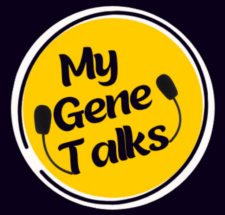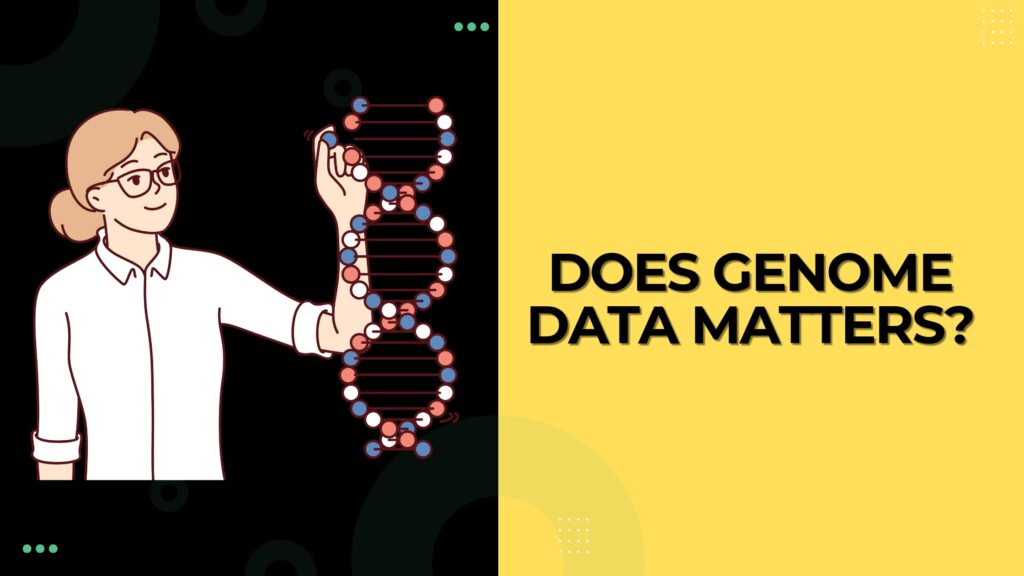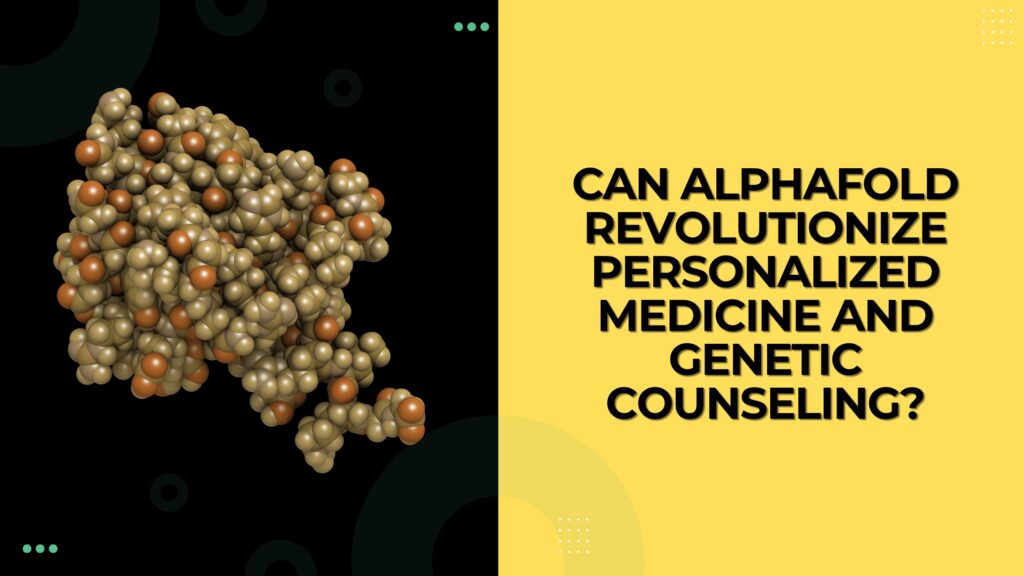Top 5 Data Science Projects for Biology Students
1.Personalized Medicine Using Genomic Data
2.Disease Prediction Using Medical Data
3.Drug Discovery and Development
4.Microbiome Analysis
5.Cancer Prediction Using Histopathology Images
Biology and data science are intersecting, creating opportunities for groundbreaking research. Whether you’re a student looking to apply programming skills in biology or aiming for a career in bioinformatics, these projects will help you develop practical experience.
1.Personalized Medicine Using Genomic Data
Objective
Use ML to predict drug response based on genetic profiles.
Skills Required
Python/R (Scikit-Learn, XGBoost)
Pharmacogenomics knowledge
Data preprocessing
Data Sources:
1000 Genomes Project (https://www.internationalgenome.org/)
The Cancer Genome Atlas (TCGA)
Project Ideas
Develop a recommendation system for personalized drug treatments
Predict adverse drug reactions based on genetic variations
Personalized medicine is revolutionizing healthcare by tailoring treatments to an individual’s genetic composition. In contrast to the traditional “one size fits all” approach, where patients with similar symptoms receive the same medication, personalized medicine takes into account the genetic variations that influence a person’s response to drugs. By leveraging data science and machine learning, researchers can analyze genomic data to anticipate how individuals will respond to medications, identify potential side effects, and develop customized treatment strategies. Central to this concept is pharmacogenomics, which studies the impact of genes on a person’s drug response. Genetic differences can lead to variations in drug metabolism, resulting in differing levels of effectiveness and side effects among patients. For instance, certain cancer therapies may be highly effective for individuals with specific genetic mutations, while proving ineffective for others. By analyzing extensive genomic datasets, machine learning algorithms can classify patients based on their genetic profiles and predict the most suitable treatment options for each individual.Developing a predictive model for personalized medicine involves multiple stages. Initially, researchers gather genomic data from various sources, including the 1000 Genomes Project and The Cancer Genome Atlas (TCGA). This data typically encompasses DNA sequences, gene expression levels, and historical information regarding drug responses. Following the preprocessing phase, which entails eliminating noise, normalizing gene expression values, and selecting pertinent genetic markers, machine learning algorithms—such as random forests, support vector machines, or deep learning models—can be employed to uncover patterns linking genetic variations to drug responses.
A significant challenge in this field is the intricate nature of gene interactions. Drug responses are rarely governed by a single gene; instead, they are influenced by a multitude of genes and environmental factors that collectively determine an individual’s reaction to medication. Advanced AI techniques, including deep neural networks and ensemble learning, enhance prediction accuracy by identifying these complex interrelationships. Additionally, explainable AI (XAI) is crucial, as it enables physicians and researchers to understand the rationale behind a model’s predictions, which is essential for its application in real-world treatment scenarios.The effects of personalized medicine reach beyond medication choice. Personalized medicine avoids harmful drug interactions, decreases trial-and-error prescription practices, and enhances patient outcomes in general. As the price of genomic sequencing comes down, it is now more possible for AI-based personalized medicine to become part of regular clinical practice. Organizations and institutions are currently researching AI-based medication recommendation systems capable of examining the DNA of a patient and generating tailored treatment options in real-time.
Personalized medicine, despite its potential, encounters obstacles related to data privacy, ethical issues, and the need for regulatory approvals. It is essential to manage extensive genomic datasets with rigorous security protocols to safeguard patient identities. Furthermore, although AI models can offer significant insights, it is crucial for medical professionals to validate these suggestions through clinical trials prior to their integration into standard healthcare practices. The trajectory of personalized medicine is intricately linked to advancements in bioinformatics, artificial intelligence, and genomics. As machine learning algorithms continue to evolve and the availability of genetic data expands, personalized therapies may become the norm for a range of diseases, such as cancer, cardiovascular ailments, and neurological conditions. By merging data science with genomics, researchers and healthcare providers can progress toward a future where each patient receives the most suitable treatment tailored to their distinct genetic makeup.
2.Disease Prediction Using Medical Data
Objective
Use machine learning to predict diseases based on patient data.
Skills Required
Python (Scikit-Learn, TensorFlow)
Data preprocessing and feature selection
Understanding of medical terminologies
Data Sources
UCI Machine Learning Repository(https://archive.ics.uci.edu/ml/index.php)
Kaggle healthcare datasets
Project Ideas
Predict diabetes or heart disease based on patient records
Analyze the spread of infectious diseases using epidemiological data
The advent of machine learning in the healthcare sector has significantly enhanced the accuracy and accessibility of disease prediction. By analyzing medical data, healthcare professionals and researchers can identify patterns that enable them to anticipate diseases before symptoms become severe. Early identification is crucial for managing chronic conditions such as diabetes, cardiovascular diseases, and cancer, resulting in improved patient outcomes and reduced healthcare costs. The increasing availability of electronic health records (EHRs), wearable health technology, and extensive medical databases is transforming disease prediction into a powerful instrument for preventive healthcare. The process of predicting diseases begins with the collection of data. Clinical information is gathered from various sources, including hospital discharge summaries, laboratory results, imaging studies, and patient-reported symptoms. These datasets often comprise structured data, such as numerical results from lab tests, as well as unstructured data, including physician notes and medical images. Once collected, the data must undergo preprocessing to rectify inconsistencies, address missing values, and standardize measurements for effective analysis. Following data cleaning, machine learning models are developed to uncover relationships between patient attributes and disease outcomes. Commonly employed techniques in disease prediction include logistic regression, decision trees, random forests, and deep learning approaches like convolutional neural networks (CNNs) for medical imaging and recurrent neural networks (RNNs) for analyzing time-series health data. These models leverage historical patient information to pinpoint risk factors and categorize new patients based on their probability of developing a disease. For instance, when predicting heart disease, a model may analyze factors such as cholesterol levels, blood pressure, age, and lifestyle choices to assess the probability of a patient experiencing a cardiac event. In cancer diagnosis, artificial intelligence-driven imaging software can interpret mammograms or MRI scans to identify tumors that may be too subtle for human detection. Similarly, in predicting diabetes, machine learning can assess variables like blood glucose levels, body mass index (BMI), and genetic predisposition to estimate an individual’s likelihood of developing the disease.One of the primary advantages of AI-driven disease prediction is its capacity to uncover complex patterns that traditional statistical methods might overlook. Machine learning can process vast amounts of data from diverse patient populations, leading to more precise predictions. However, the effectiveness of these models relies on the availability of large, high-quality datasets. Imbalanced datasets with underrepresented conditions can lead to biased results, making thorough data processing and model evaluation essential. As machine learning models advance and receive regulatory approval, the landscape of predictive healthcare is expected to transition from a reactive approach—treating diseases post-development—to a proactive strategy that identifies and prevents diseases before they inflict significant damage.
3.Drug Discovery and Development
Objective
Use machine learning to analyze chemical compounds and predict drug efficacy.
Skills Required
Python (RDKit, DeepChem)
Bioinformatics and cheminformatics
Machine learning models
Data Sources
ChEMBL Database (www.ebi.ac.uk/chembl/)
PubChem(https://pubchem.ncbi.nlm.nih.gov/)
Project Ideas
Predict drug-target interactions
Design a model to screen potential drug candidates
The process of drug discovery and development has traditionally been both expensive and lengthy, often requiring over a decade and billions of dollars to bring a new medication to market. However, the advent of data science, artificial intelligence, and computational biology is significantly transforming this landscape. The use of machine learning algorithms, extensive data analysis, and bioinformatics tools is accelerating drug discovery by identifying promising compounds, predicting their interactions with biological targets, and refining drug candidates prior to clinical trials.One of the most significant challenges in drug discovery is identifying molecules that effectively target diseases while minimizing side effects. Traditionally, scientists would evaluate thousands of compounds through laboratory tests to identify potential drug candidates, a process that was both time-consuming and inefficient. Today, machine learning models that are trained on vast chemical and biological datasets can predict which compounds are most likely to interact with disease-related proteins, drastically reducing the time and costs associated with early-stage research.
A key technique in modern drug discovery is virtual screening, where AI models analyze chemical compound databases to identify those with the highest probability of success. Deep learning algorithms, such as convolutional neural networks (CNNs) and graph neural networks (GNNs), can model molecular structures and assess their biological activity. These models leverage data from previous drug trials, genomic studies, and molecular docking simulations, allowing scientists to prioritize the most promising candidates for laboratory evaluation. A significant advancement in AI-driven drug discovery is the ability to predict interactions between drugs and their targets. By analyzing the mechanisms of protein function and the ways in which drugs interact with these proteins, machine learning algorithms can identify novel drug-target pairings that may not have been previously considered. Innovations like AlphaFold, which accurately predicts protein structures, have revolutionized this field by providing crucial insights into molecular interactions at the atomic level. This progress has opened new pathways for creating drugs that can effectively target proteins associated with diseases. However, challenges persist in AI-driven drug discovery. One of the primary obstacles is the quality of data, as biological and chemical datasets are frequently incomplete or exhibit bias. Furthermore, while AI can propose potential drug candidates, it is imperative to conduct laboratory validation and clinical trials to ensure their safety and effectiveness. Regulatory agencies, including the FDA and EMA, mandate thorough validation processes before any AI-generated drug discoveries can receive approval for human application.
4.Microbiome Analysis
Objective
Analyze microbial communities from different environments (e.g., gut microbiome, soil microbiome).
Skills Required
Python/R (Bioconductor, Qiime2)
16S rRNA sequencing analysis
Data visualization
Data Sources
Human Microbiome Project (https://hmpdacc.org/)
MGnify Metagenomics (https://www.ebi.ac.uk/metagenomics/)
Project Ideas
Compare gut microbiome diversity in healthy vs. diseased individuals
Study the effect of diet on microbiome composition
The human microbiome, a diverse and intricate ecosystem comprising bacteria, viruses, fungi, and other microorganisms residing in and on the body, is crucial for both health and disease. Recent advancements in sequencing technologies and data science have enabled the analysis of microbiome composition on an unprecedented scale, revealing its influence on digestion, immunity, mental health, and chronic illnesses. By utilizing machine learning and bioinformatics methods, researchers can discern microbial patterns linked to various health conditions, assess disease risks, and even create personalized treatment plans tailored to an individual’s microbiome profile.A significant challenge in microbiome analysis is managing the enormous amounts of sequencing data generated from microbiomes found in areas such as the gut, skin, or oral cavity. High-throughput sequencing techniques, including 16S rRNA sequencing and metagenomics, provide comprehensive insights into microbial communities; however, they often produce noisy and unstructured raw data. To make sense of this information, scientists utilize bioinformatics pipelines that preprocess the sequencing reads, identify microbial species, and estimate their relative abundances. Subsequently, machine learning algorithms analyze these patterns to distinguish between healthy and diseased microbiomes, detect microbial imbalances, and identify key bacteria associated with specific health conditions.Microbiome data science holds significant potential across various fields. In the realm of medicine, researchers are exploring the impact of gut microbes on conditions such as obesity, diabetes, inflammatory bowel disease, and even mental health issues like depression and anxiety. By analyzing the microbiome profiles of patients alongside those of healthy individuals, predictive models can identify microbial indicators of disease, offering potential diagnostic biomarkers. Furthermore, microbiome-targeted therapies, including probiotics, prebiotics, and fecal microbiota transplants, are being enhanced through artificial intelligence to help restore a healthy microbial balance in patients with gut disorders.However, microbiome research encounters numerous obstacles. The microbiome is highly variable and subject to influences from diet, lifestyle, and geographic location, complicating the identification of universal patterns. Additionally, the intricate nature of microbial interactions suggests that straightforward correlations may not accurately reflect causal relationships. Data privacy also poses a significant issue, as microbiome sequencing information can be deeply personal and closely tied to an individual’s health status.
5.Cancer Prediction Using Histopathology Images
Objective
Use deep learning to classify cancerous vs. non-cancerous tissue images.
Skills Required
Python (TensorFlow, OpenCV)
Image processing (CNNs, transfer learning)
Histology basics
Data Sources
The Cancer Imaging Archive (TCIA) (https://www.cancerimagingarchive.net/)
Kaggle Histopathology Image Datasets
Project Ideas
Build a CNN model to detect breast cancer in biopsy images
Develop an AI tool for automated cancer diagnosis
The traditional method of diagnosing cancer has relied on pathologists who analyze tissue samples under a microscope to identify abnormalities. This process can be lengthy, prone to human error, and often subjective. However, advancements in artificial intelligence and deep learning are transforming histopathology image analysis into a powerful tool for cancer detection, enabling faster and more precise diagnoses. By training machine learning algorithms on extensive datasets of labeled histopathology images, researchers can develop automated systems capable of identifying cancerous cells, classifying tumors, and even predicting patient outcomes. The process begins with the collection of histopathology images obtained from biopsies, which are then stained and converted into high-resolution digital images. These images undergo preprocessing to enhance contrast, reduce noise, and standardize color discrepancies caused by different staining techniques. Deep learning algorithms, particularly convolutional neural networks (CNNs), are trained on these images to detect patterns associated with malignant and benign tissues. Unlike traditional methods that rely on manually crafted features, deep learning autonomously learns hierarchical features from the raw image data, significantly improving its ability to distinguish between cancerous and healthy cells.A significant application of artificial intelligence in histopathology is the classification of tumors. Different types of cancer exhibit unique morphological characteristics, and deep learning algorithms can be developed to accurately recognize these variations. For example, AI systems are capable of subtyping breast cancer, detecting lung cancer nodules, and differentiating between various grades of brain tumors. Additionally, these models can assess tumor progression by analyzing changes in tissue structure over time, allowing oncologists to refine treatment strategies accordingly.
Another crucial application is the early detection of cancer. Many cancers, such as cervical and colorectal cancer, have a high success rate when diagnosed at an early stage; however, identifying precancerous lesions requires meticulous examination. AI-driven histopathology tools can emphasize suspicious regions in biopsy images, alerting pathologists to areas that may need further investigation. This approach helps prevent missed diagnoses and enhances the effectiveness of cancer screening initiatives. Histopathological datasets are typically extensive and demand significant computational resources for the training of deep learning models. Variations in staining methods, differences in imaging technologies, and inconsistencies in labeling standards among hospitals can result in fluctuations in model performance. To mitigate these issues, researchers employ strategies such as transfer learning and domain adaptation to enhance the generalizability of AI models across various datasets. As AI-enhanced cancer prediction technology advances, it is becoming an essential component of precision medicine. The combination of histopathology image analysis with genomic information and clinical data has the potential to facilitate more tailored cancer therapies. With advancements in AI algorithms, increased data accessibility, and enhanced computational capabilities, automated cancer detection systems are poised to improve diagnostic precision, alleviate the workload of pathologists, and ultimately lead to better patient outcomes. The future of cancer diagnosis is likely to involve AI collaborating with healthcare professionals, providing vital assistance in making quicker, more accurate, and data-informed decisions rather than replacing them.



